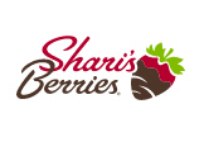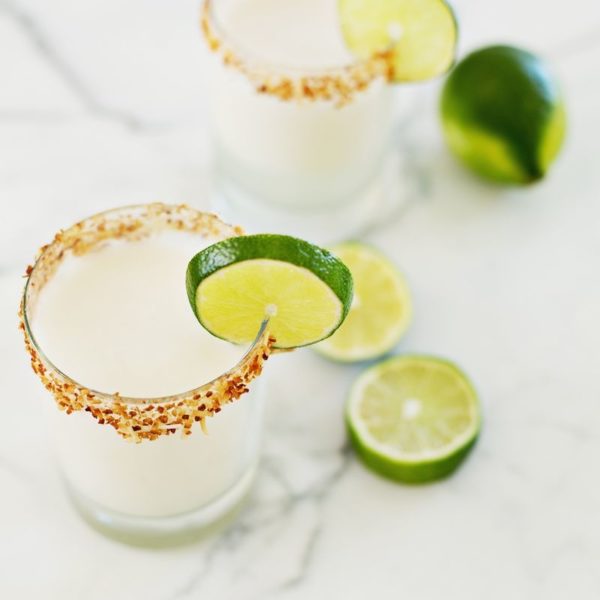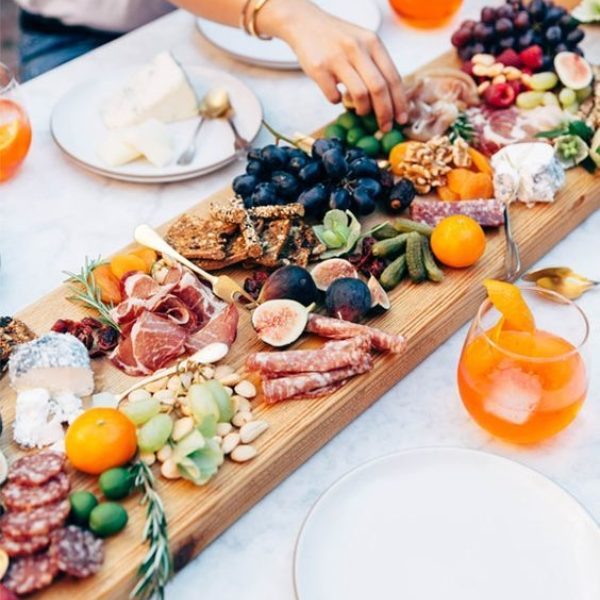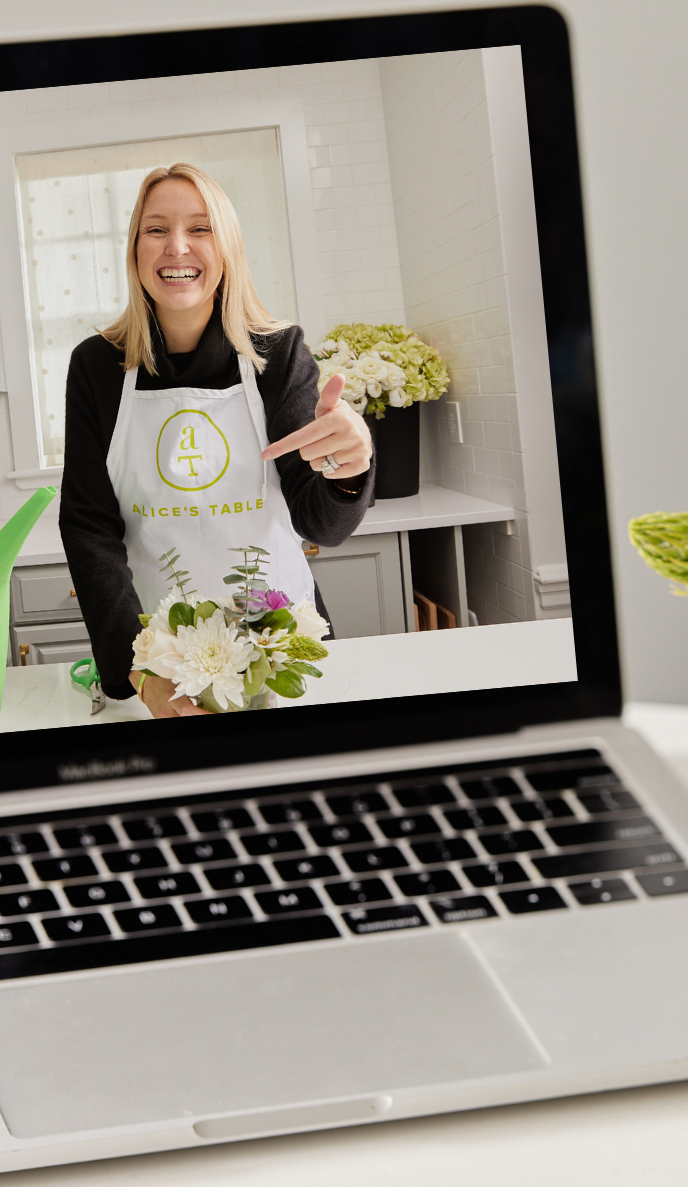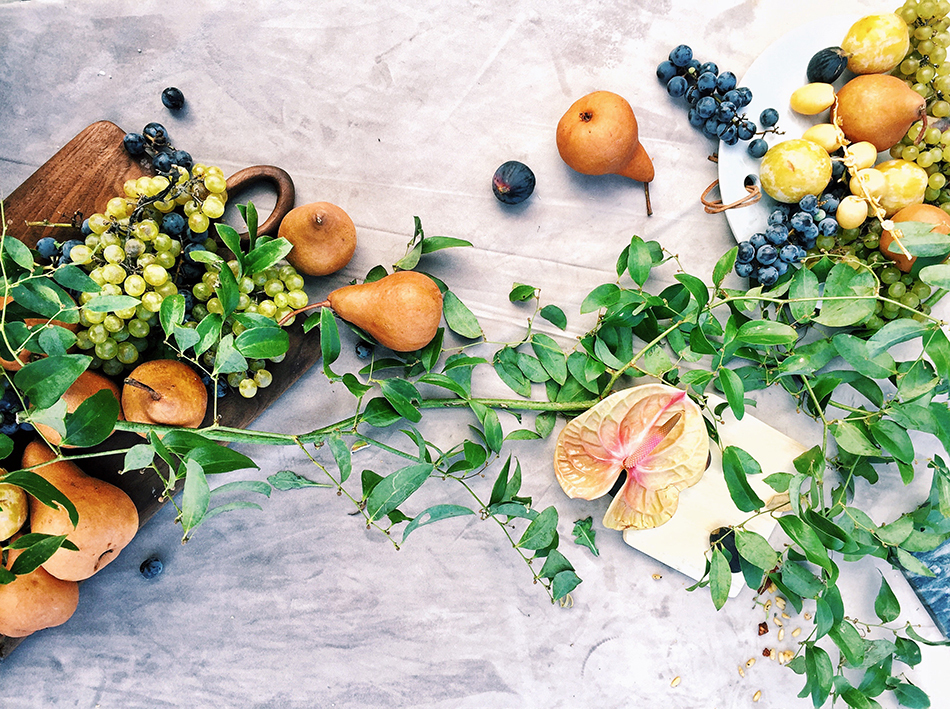
Swiftly approaching is the season of entertaining overload, and we’re betting that you’re hosting at least one get-together (possibly more, possibly all of them). So we wanted to share a few tips for creating a spread that looks enviably complicated, but is actually a cinch to pull off.
Sticking with consistent colors throughout your flowers and food is the single best way to elevate your table’s “look” (think more pretty, less potluck). Here fall colors—persimmon, buttery yellow, smoky purple—bring in the season and match the muted tones of the bread, cheese, and roasted veggies. But the scheme could easily be switched up to pale pastels in spring or whites and reds in winter.
Arrange the noms on wood and marble cutting boards, in stoneware platters and bowls, and in different baskets in a variety of sizes and shapes. Laying some of your serveware directly on the table while setting other vessels on cake stands lets you cheat extra serving space and adds depth.
Not only are collections of like items visually arresting (grouping is a back-pocket trick of interior designers), but they allow guests to quickly assess what they want from each food type (e.g. brie or gouda, sishito peppers or broccolini—or yes, yes, yes, and yes) and keep the line moving.
Vines add volume, are a consistent thread that helps tie your tableau together, and, best of all, are typically affordable at your local flower market. But if they’re not easy to score where you live, bunches of greenery like eucalyptus, agonis, or bay leaves will do the trick.
Since the food is the star of this show, your flowers can be limited to a couple free-flowing arrangements (store-bought blooms work just fine) and a handful of loose single blossoms sprinkled here and there.
A smattering of apples, pears, pomegranates, and figs will give your table the effortless abundance of a still-life painting.



